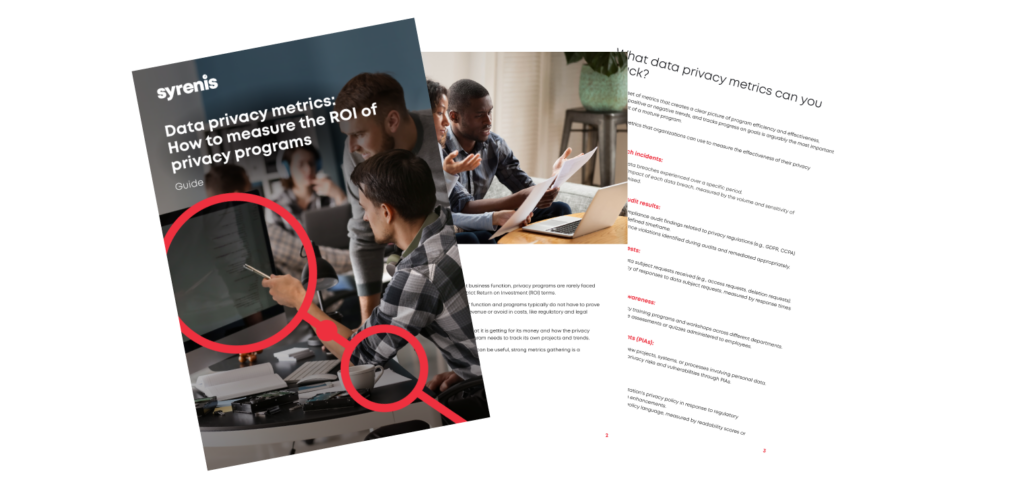Privacy is now a core business concern for organizations operating across digital ecosystems. As global regulations evolve and customer expectations rise, companies must move beyond reactive compliance and build internal cultures that prioritize ethical data practices. This blog explores how to foster a privacy-first culture, the role of leadership and employee empowerment, and how consent and preference management supports scalable, trustworthy operations.
- Why culture matters more than policy
- The risks of checkbox compliance
- Leadership sets the tone
- Empowering employees to own privacy
- Measuring what matters
- Staying agile
- The role of consent and preference management
Why culture matters more than policy
As Mahatma Gandhi said, “A nation’s culture resides in the hearts and in the soul of its people.” The same applies to organizations. Culture shapes behavior, reinforces values, and determines whether privacy is treated as a strategic priority or a regulatory burden.
A culture of compliance ensures that ethical behavior is the norm. It empowers employees to speak up, challenge assumptions, and take ownership of privacy outcomes. Without it, even the most well-designed compliance programs risk becoming fragmented, reactive, and ineffective.
The risks of checkbox compliance
Without a culture of compliance, an organization will feel as if it is pushing an enormous bolder up hill – all the time – to accomplish the bare minimum of just keeping out of regulatory trouble. If something goes sideways, issues that employees notice early on are more likely to go unreported, leading to even larger issues further ahead.
Organizations that lack a privacy-aware culture often struggle to meet even baseline compliance requirements. Key risks include:
Reactive operations
Compliance efforts focus on short-term tasks rather than long-term strategy, leading to fragmented and inefficient programs.
Unreported issues
Employees may hesitate to raise concerns early, allowing small problems to escalate into larger risks.
Superficial compliance
Activities center on the letter of the law, not its intent, resulting in piecemeal efforts that don’t scale.
Trend-driven priorities
Privacy budgets are often directed toward high-visibility issues rather than those that deliver meaningful outcomes for data subjects.
Exposure to regulatory shifts
A lack of strategic alignment leaves companies vulnerable to changes in laws, enforcement, and public expectations.
By contrast, a privacy-first culture:
- Embeds compliant behaviors into daily operations, decision-making, and stakeholder interactions.
- Builds trust with customers, regulators, and partners.
- Supports long-term performance and resilience.
While developing this culture takes time and intention, privacy leaders can guide their organizations toward it through clear strategy, leadership alignment, and employee engagement.
Leadership sets the tone
Privacy culture starts at the top. When executives and middle managers consistently communicate the importance of privacy, and model the right behaviors, they create an environment where privacy is valued and prioritized.
Middle management plays a particularly influential role. These leaders interact with more employees and can embed privacy into daily decision-making, project planning, and team dynamics.
Empowering employees to own privacy
Employees are the first line of defense in privacy protection. To build a privacy-first culture, organizations must:
- Provide clear, accessible training
- Equip teams with practical tools and policies
- Encourage a “see something, say something” mindset
- Create safe channels for reporting concerns
- Avoid punitive responses to honest mistakes
When employees feel empowered and supported, they are more likely to take ownership of privacy outcomes.
Measuring what matters
Embedding privacy into performance metrics reinforces its importance. While measuring outcomes like customer trust can be challenging, organizations can start by:
- Defining privacy KPIs tied to business goals
- Including privacy in performance reviews
- Recognizing and rewarding privacy-positive behaviors
Metrics signal what matters. When privacy is measured and rewarded, it becomes part of the organizational DNA.
Staying agile
Privacy is not static. New technologies, regulations, and customer expectations require organizations to adapt continuously. A privacy-first culture includes:
- Regular reviews of privacy practices and risks
- Feedback loops for employee input
- Flexibility to adjust policies and procedures
- Cross-functional collaboration to stay ahead of change
Agility ensures that privacy remains relevant, effective, and aligned with business strategy.
The role of consent and preference management
Consent and preference management is the operational backbone of a privacy-first culture. It transforms abstract values into actionable controls by:
- Centralizing user permissions across systems
- Enabling real-time updates and auditability
- Supporting compliance with global regulations
- Empowering individuals with transparency and control
Without a unified approach to consent, organizations risk fragmented data practices, inconsistent user experiences, and regulatory exposure. A strong consent and preference management platform ensures that privacy values are consistently applied across marketing, IT, and compliance functions.
Privacy culture is a competitive advantage
Building a culture of privacy moves us away from the mindset of ‘just avoiding fines’. Instead, a privacy culture turns into earning trust, enabling innovation, and creating long-term value.
By aligning leadership, empowering employees, measuring progress, and operationalizing consent, you can turn privacy from a compliance obligation into a strategic differentiator.


